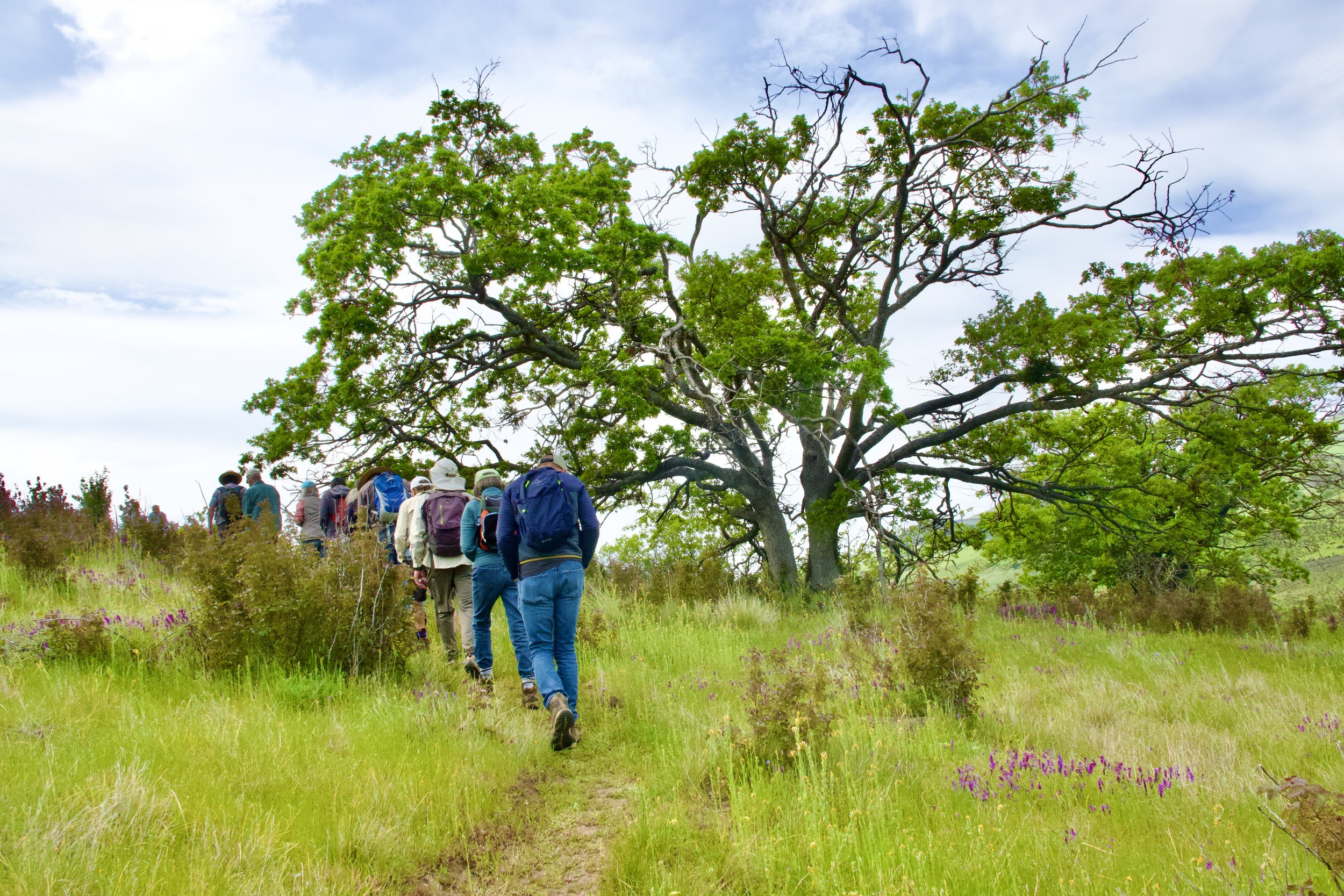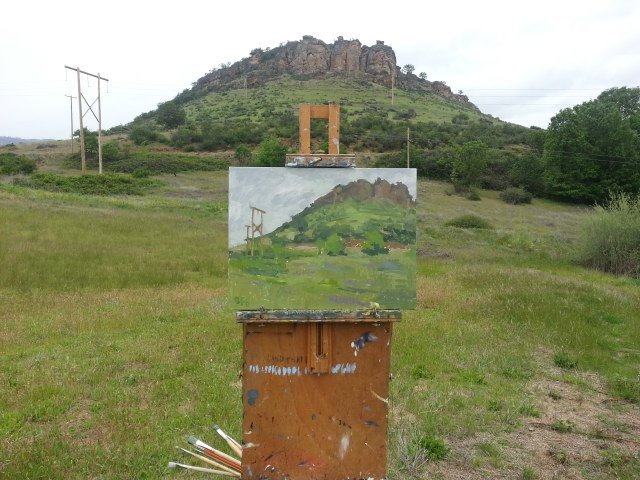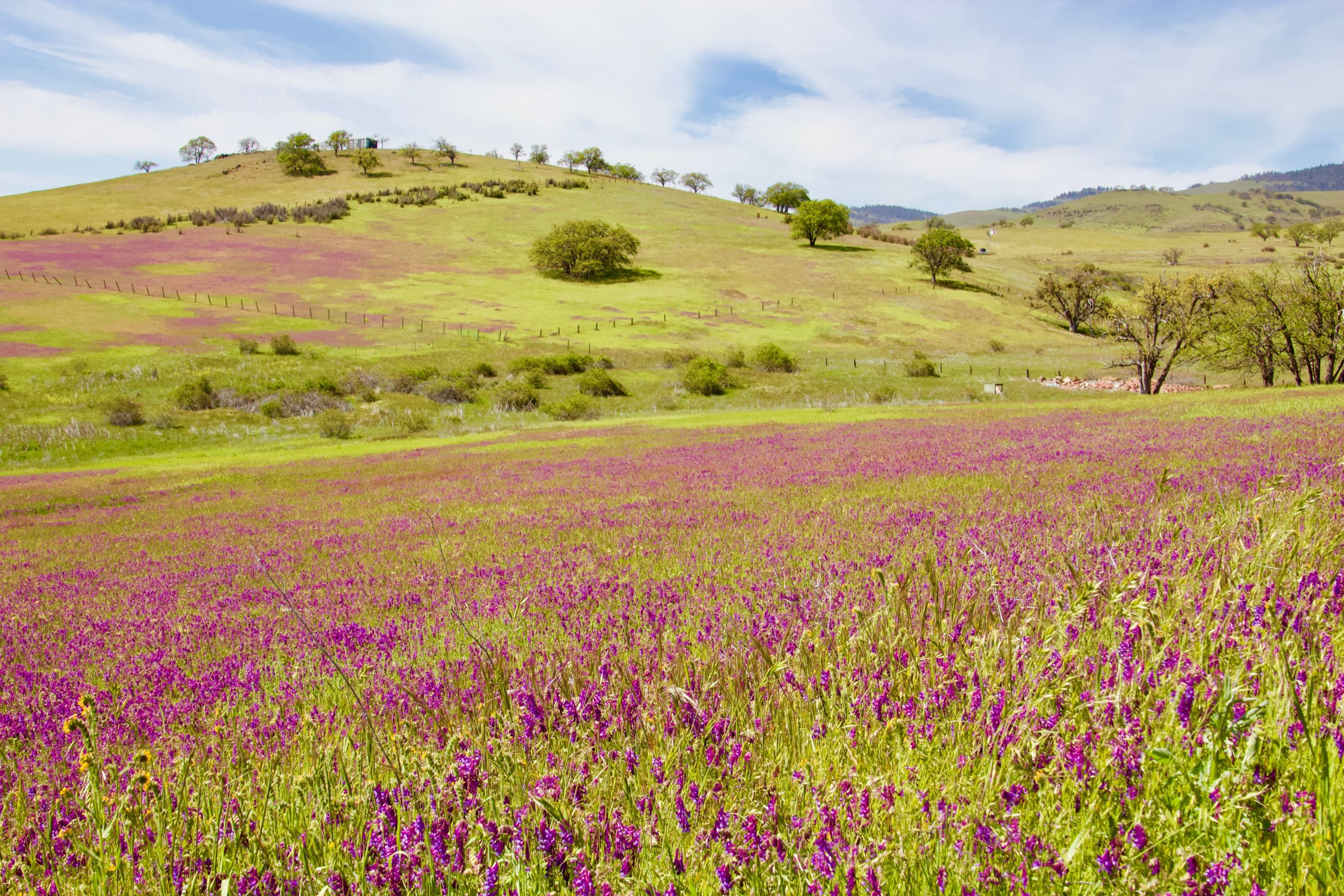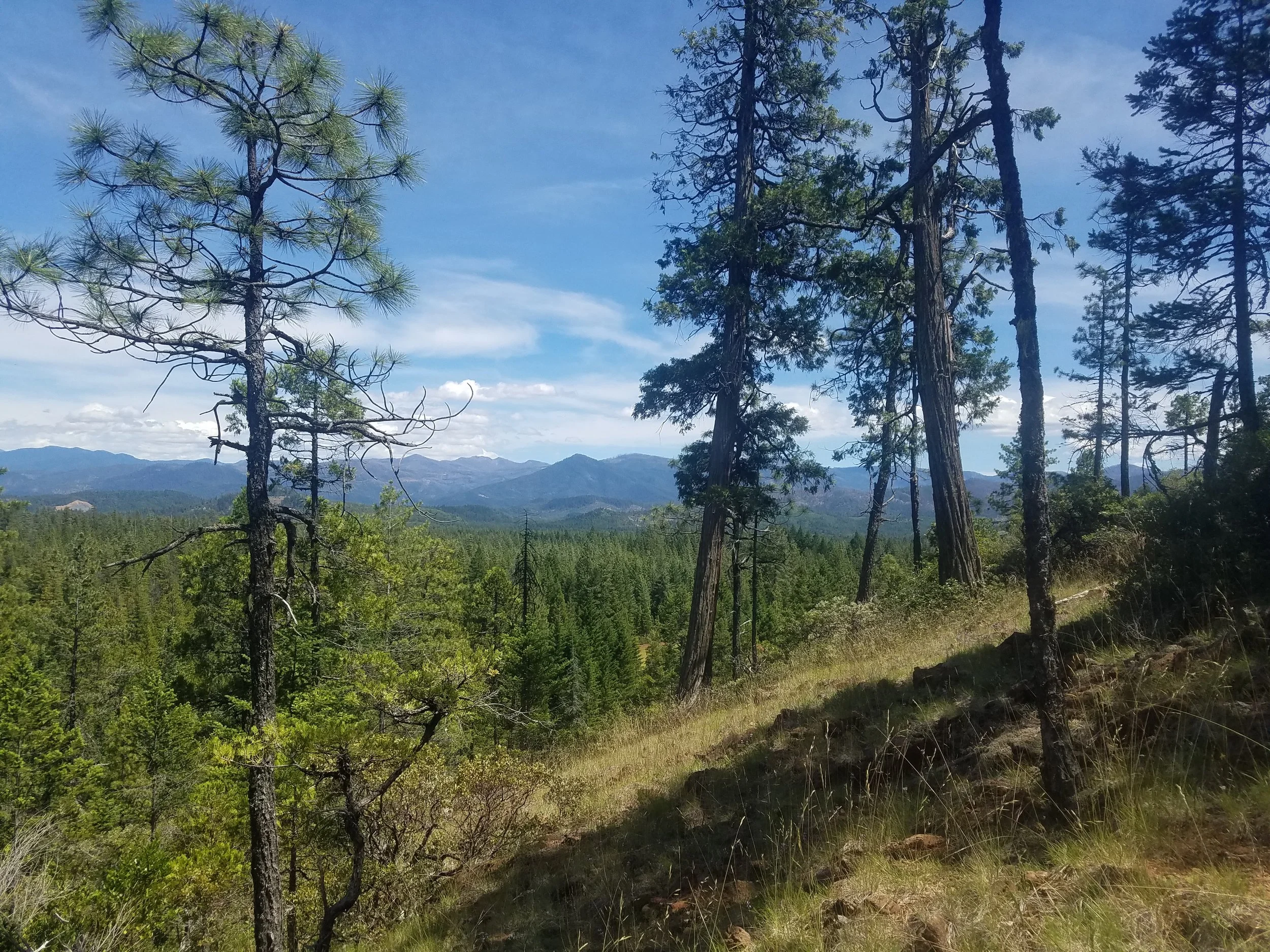By Emily Heller, SOU Student
December 5, 2023
The Harry & Marilyn Fisher Preserve at Pompadour Bluff is a beautiful landmark towering over the City of Ashland. Primarily made of Eocene-age sedimentary rocks, the bluff is a unique and rare feature of the Rogue Valley. The cliffs and small caves serve as excellent wildlife habitat. There are also many distinct vegetation communities concentrated around the bluff, including native grasslands, that can promote a lot of diversity in animal communities.
It has been 43 years since a team of Southern Oregon University researchers studied the unique pinyon mouse (Peromycus truei) at Pompadour Bluff. Since no studies on the mouse population have been conducted since then, there has been a lot of uncertainty around whether or not pinyon mice still persist there. This uncertainty is what sparked Dr. Karen Mager and her Southern Oregon University mammalogy class of 15 students to initiate the first small mammal population research study at Pompadour Bluff since 1980.
On November 7th, 2023, the research team baited Sherman live traps with some tasty treats (sunflower seeds and freshly sliced apples) and fluffy, white nesting material that an animal could use to bundle up. They placed the Sherman traps across three different habitats: grassland, chaparral, and oak woodland. They also placed traps on top of the bluff around the rocks.
Sherman Traps humanely capture living small mammals for research
On November 8th and 9th, the researchers returned to Pompadour to see if there were any animals who took the bait.
As a part of the team in the study, I was so excited to get the opportunity to see the animals we found up close. We would walk up to each Sherman trap to see if any animal was inside. If the door to the trap was closed, it meant that there was potential that an animal was present (sometimes the doors would close on their own). If the door of the trap was closed, and if it was actually moving, you had yourself a winner. If the door was closed and it had some weight to it once you picked up the trap, chances were, there was an animal bound to be inside.
I felt a rush of excitement when I picked up a closed trap in the rocky outcroppings that surely had a small mammal inside. That was when I called the rest of the team over to take a look. Next, Dr. Mager handled the trap while one of us placed a Ziploc bag underneath. We waited with much anticipation for a few seconds until…
A small, white-bellied individual with a honey-brown back and noticeably large ears delicately descended into the bag.
Pinyon mice are more common in the Basin & Range
We identified the animal as a female pinyon mouse. She was healthy and weighed about 36 grams. We took her out of the bag and carefully swabbed her mouth (the swab would later be used in a genetic test). I was surprised to see how calm she was during the whole process. After we were done studying her, we released her back into her respective habitat.
Students collected genetic info
The next animal we found was even more surprising.
The next trap was much heavier than the female pinyon mouse’s trap. There were several whispers from the team, asking, what could be in there?
After doing the same Ziploc bag procedure as before, we were all gasped when we saw a giant dark gray, brown, and white creature with small ears and long black whiskers appear in the bag.
Dusky-footed wood rat
We identified the animal to be a dusky-footed woodrat (Neotoma fuscipes). The animal was too big to weigh with the resources we brought. It weighed over 100 grams. We thought it was humorous how the woodrat fit just perfectly into the trap. The animal ate all of the bait food and was probably pretty content.
Dusky-footed woodrats are pretty interesting rodents. They build nests made out of sticks. Nearby the Sherman trap where we caught our dusky-footed woodrat, we found a nest that may have belonged to the one that we caught.
One researcher on the team, Kelsey, mentioned that she saw a lot of signs on the rocky cliffs that woodrats had lived there. While we saw stick nests belonging to dusky-footed woodrats, there was another sign that we noticed. A relative to the dusky-footed woodrat we caught, bushy-tailed woodrats (Neotoma cinerea) have highly acidic urine that stains rocks. They do this to mark their territory. Even though we didn’t catch a bushy-tailed woodrat in our study, we were certain that they were around due to the signs of them we saw in the rocks.
We also noticed that the dusky-footed woodrat had a large parasite on its neck. A couple other animals that the team had caught in the study were found to have had parasites on them, too.
In total, we captured five pinyon mice in the study (3 of which were female, with the mean weight being about 32.2 grams). We also captured one female California vole (Microtus californicus) that weighed about 45 grams.
It was such a great opportunity to visit Pompadour Bluff and find that pinyon mice were still present in the area. A member of the research team, Fiona, expressed that she was grateful to have discovered that the pinyon mouse population seemed to be healthy and stable. We learned that most of the small animals thrived on top of the bluff in the rock outcrops.
Pompadour Bluff is not only a scenic part of the Rogue Valley, but also a habitat teeming with thriving populations of small critters, from tiny pinyon mice to large dusky-footed woodrats.
I would like to thank Dr. Karen Mager, Dr. Michael Parker, the Southern Oregon Land Conservancy, and the research teams of both 1980 and 2023.














